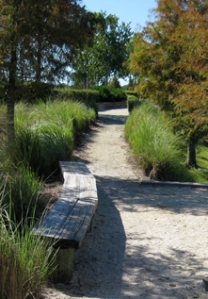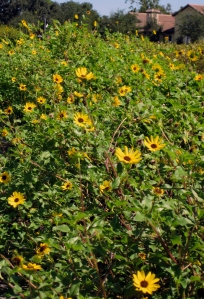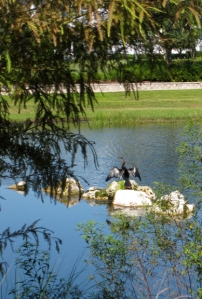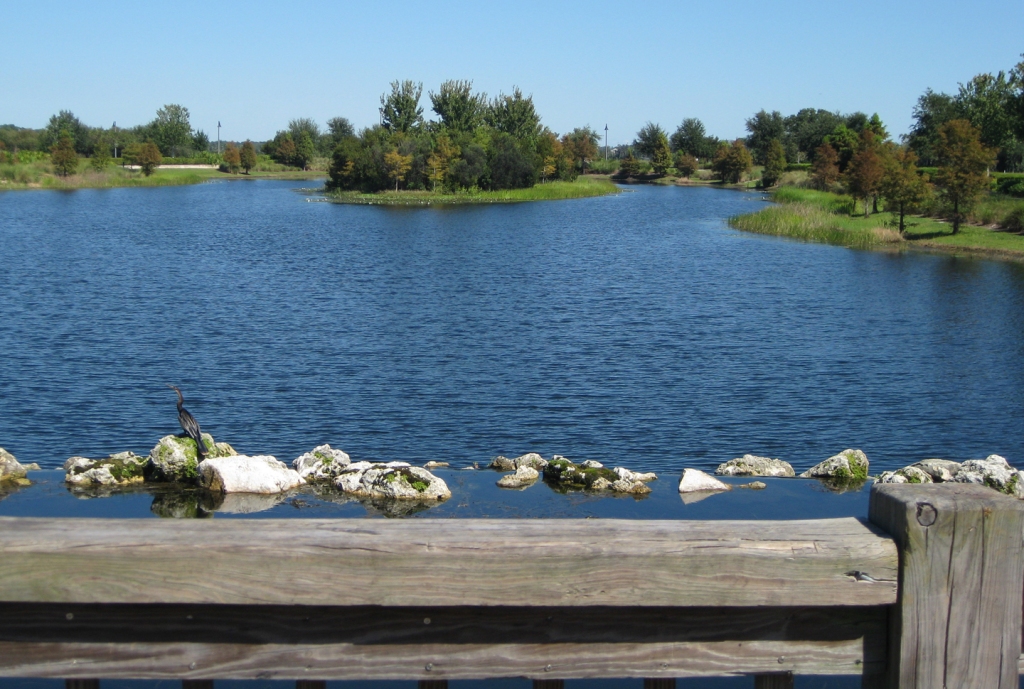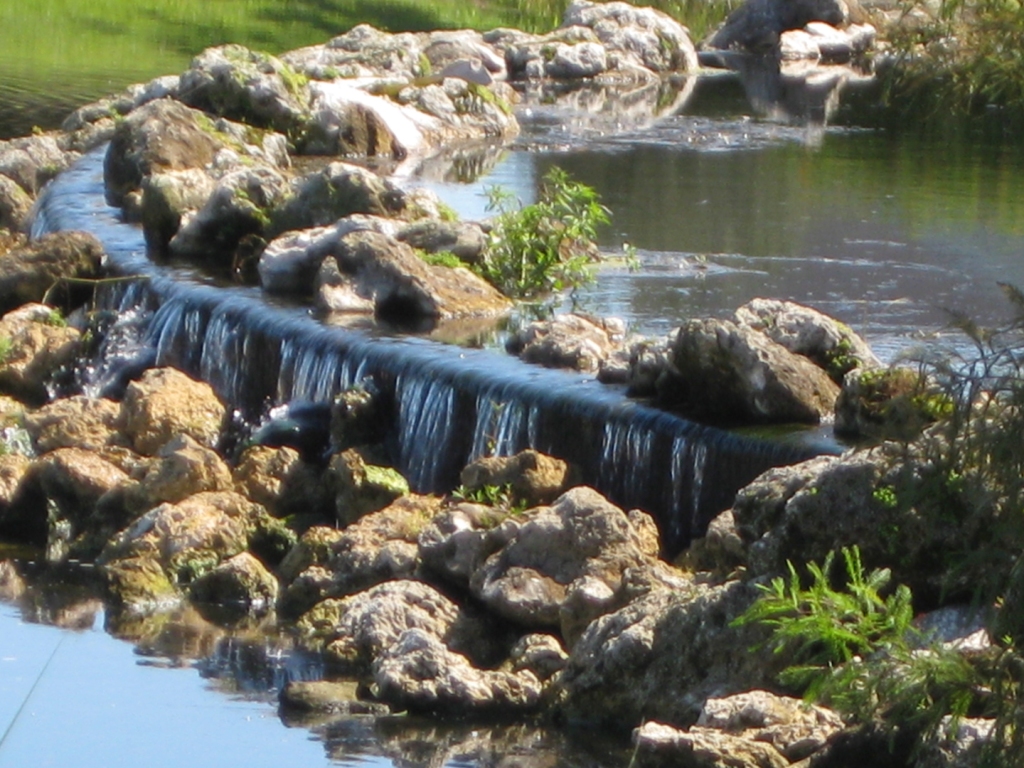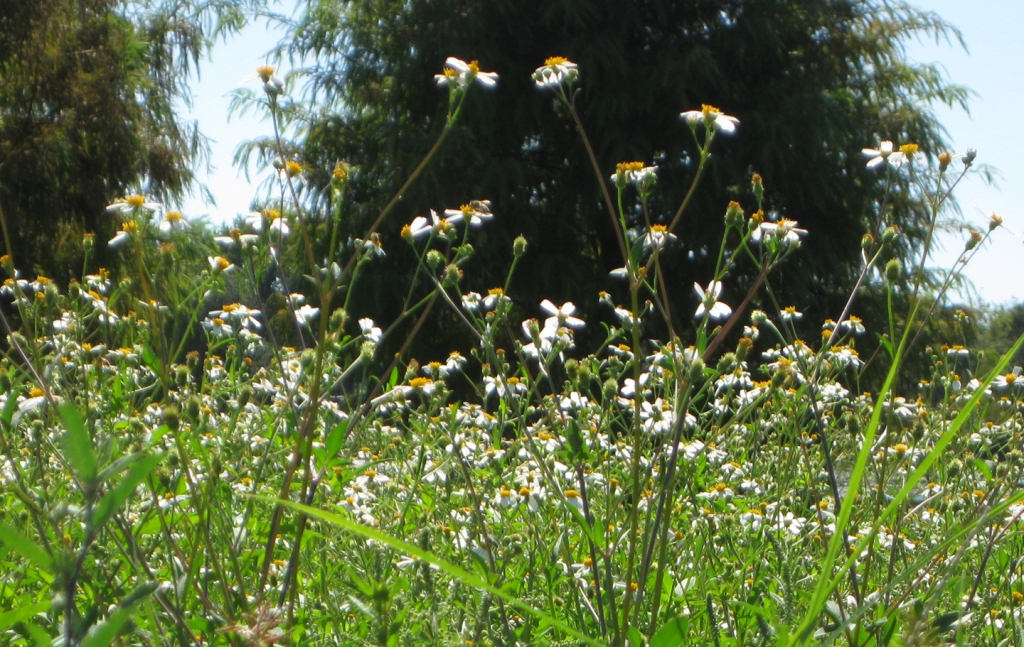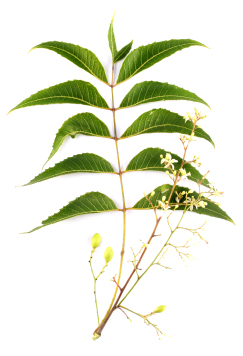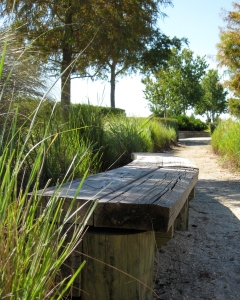 Location: Orlando, Florida from 11:00-11:45am
Location: Orlando, Florida from 11:00-11:45am
Weather: Sunny, 74°F – High: 81°F Low: 60°F
For my first Nature Walk Project, I’ve chosen to document a path that circles a small, nearby lake. I live in a large neighborhood with a small downtown area, tree lined streets and several lakes and nature preserves. To get to the path around the lake I have to walk about half of a mile. As I step off of the sidewalk, where my footsteps fall quietly, and onto the crushed shell path, each foot fall creates a gentle crunching sound.
Just a short way along the path is a wooden bench. I sit on the bench looking out at the small island of trees that sits in the center of the lake. From this spot I can still hear the cars passing along the nearby street and the voices of people as they walk along the sidewalk. I can also hear the occasional bird call and a dull popping noise coming from the water. I get up and walk to the water’s edge and a gentle breeze blows the reeds and tall grasses that grow here. I stand quietly listening for the noise, looking among the lily pads, along the lake bank and can’t see anything to attribute the noise to. After a few minutes, I admit defeat and turn to sit back on the bench. Only this time, I see the snake that has been sitting there. I stick around only long enough to snap his picture, then I keep going down the path.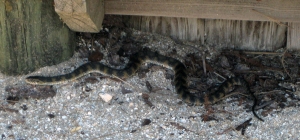
Wonderful yellow flowers grow in great bunches along this part of the path. They are long and leggy this time of year and I can just start to see the signs of autumn in the few brown patches that have begun to show. A few insects can be seen flying around the flowers, including a couple of bees out to gather the last bits of nectar for the season. The noises from passing cars and people are much quieter here and I can just begin to hear the sounds of a small, nearby waterfall.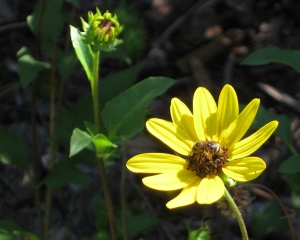
There is a wooden bridge that crosses over, where a larger lake flows into a small pool, just before the shallow falls empty into the lake. My footsteps create a unique clunking noise when they hit the wooden boards as I cross onto the bridge. Through a break in the trees I can see a large bird sunning himself on the rocks. The noise of cars and people are gone, replaced by the flow of the falls and the constant chirping of birds. Standing in the center of the bridge, I can see over the lake to the small island at the other end. Below me the water is dark today and the underwater reeds have started to brown with the season change. Ripples erupt from below as one of the small fish touches the surface. If I look into the water I can see schools of Sunny Fish, as they remain still in the water, only their tails gently undulate to keep them steady.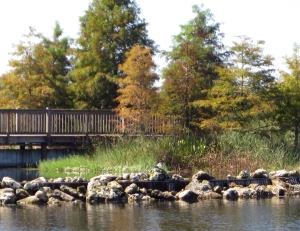
As I finish crossing the bridge and step back onto the path, I hear the crunch, crunch beneath my feet as every step grinds tiny bits of shell and sand together. Large Dragonflies are swooping around and their wings sound like light plastic clicking together. Small butterflies are flitting along the path and through the wild flowers that line it. I keep walking and slowly the sounds of flowing water grow quieter and the voices of people walking nearby grow louder. I take a final picture of the cypress trees that line the lake bank and I can hear someone riding a skateboard on the sidewalk, the wheels clunking over each crack.
Just as I’m about to step off of the path, a fish leaps out of the water and flops back in with a splash. This is October.
Learn more about the Nature Walk Project here: The Nature Walk Project

